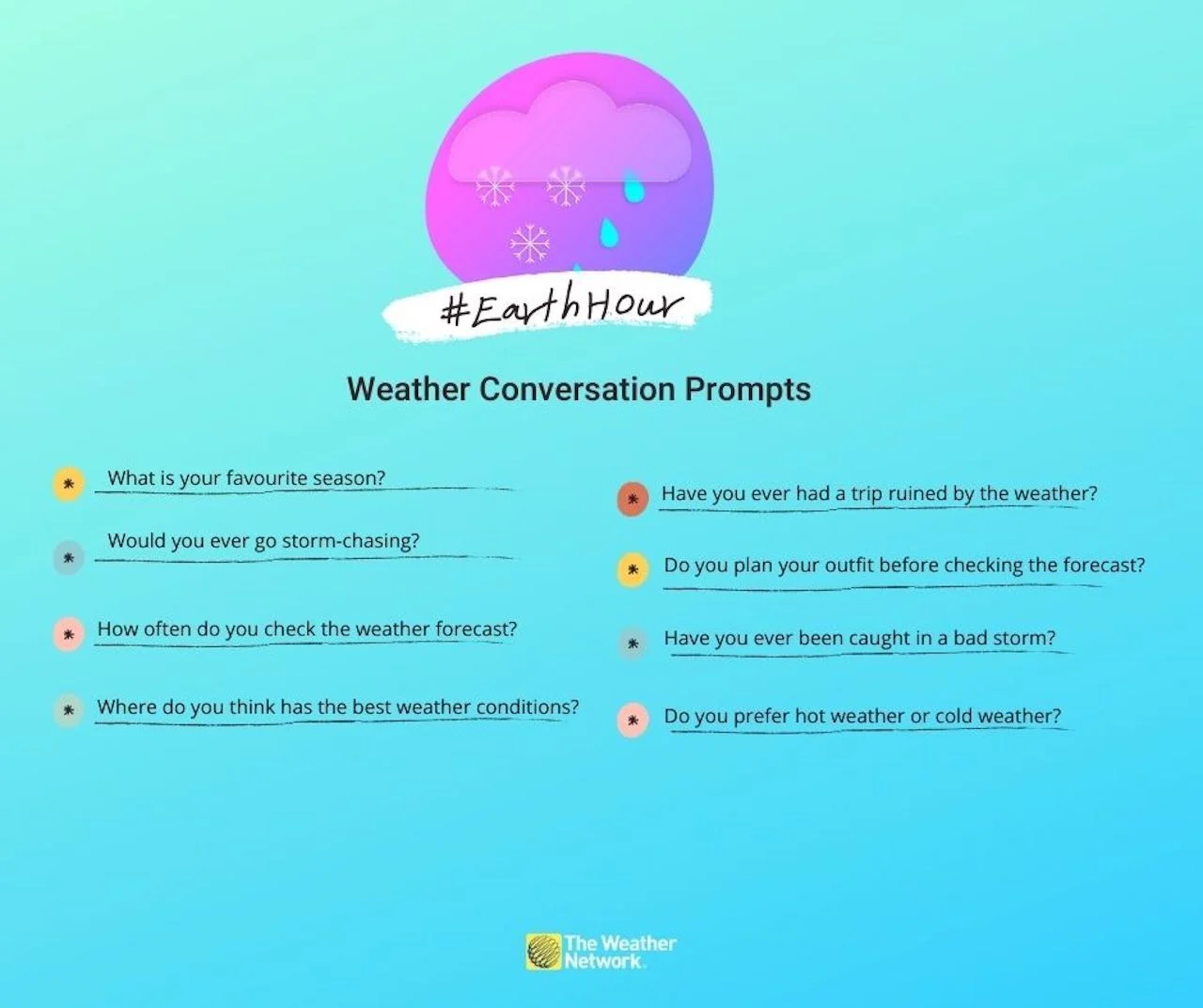
Earth Hour offers climate solutions beyond turning off the lights
On Saturday night, millions across the globe partook in Earth Hour, but the annual event can be more than just 60 minutes of electricity conservation—it can be the catalyst for change to reshape the planet's future
Every year, millions of people worldwide turn off the lights for Earth Hour, but the movement can bring more positive effects than just saving electricity for 60 minutes.
On a Saturday night every March, folks can help the climate crisis by joining Earth Hour at 8:30 p.m. local time, just by turning off the power. Every kilowatt saved makes a difference. But there are more initiatives through the movement that can and have benefitted Earth's environment.
DON'T MISS: Don’t be left in the dark about Earth Hour this year
Since its inception from the World Wildlife Fund (WWF) in Sydney, Australia, in 2007, adopted in Canada in 2008, the globe has experienced a tremendous amount of extreme weather disasters and has seen an uptick in average temperatures globally, with 2024 setting a record for the warmest year ever. With last year also the first 12-month period to exceed 1.5°C above pre-industrial temperatures, the escalating warmth is helping to drive extreme weather events.
As well, the new record came after 15 consecutive months (June 2023 to August 2024) of monthly temperature records—also unprecedented.

Earth Hour 2025 is from 8:30 p.m. to 9:30 p.m. local time on Saturday, March 22. (Getty Images/Wongmbatuloyo/1463609426-170667a)
Earth Hour began as a movement that asked people to switch off their lights for 60 minutes, but it has "evolved to be more diverse than that," helping to spawn campaigns and events across the world to recruit supporters to take action for the planet in numerous ways, said Kate Landry, senior manager of community action at WWF-Canada.
"These calls to action offer opportunities to engage that go beyond the impact of turning off the lights," said Landry, in a statement provided to The Weather Network through email.
Other ways to fight climate change
During Earth Hour itself, there are numerous activities to do to stay entertained, but WWF-Canada has additional ways to make a difference.

To inspire people in trying something new to "make a meaningful difference" for an hour, if not longer, Landry said, WWF-Canada is asking people to:
Make an action plan for creating wildlife habitat at home. Participants can sign up for a free re:grow account to learn how they can help support bees, birds and other wildlife by growing native plants. Habitats can grow anywhere, including yards, patios, balconies, or community gardens.
Register for the WWF Climb for Nature. This year, supporters can reach new heights for wildlife by climbing steps in Toronto (April 5-6), Vancouver (May 10) or anywhere in Canada (April to June). Funds raised will support efforts to recover wildlife, conserve nature and fight climate change.

The WWF Climb for Nature at BC Place in Vancouver, B.C. (WWF-Canada)
Stay current on conservation. Those who want to stay in the know can sign up for WWF-Canada’s Fieldnotes newsletter, or follow its social media accounts including X, Bluesky, Instagram and Facebook to receive the latest updates and help spread the word.
Earth Hour's contributions to the climate change battle
Turning the lights off for 60 minutes for Earth Hour is a symbolic show of support for the planet that raises awareness of the environmental problems it faces, Landry said.
"Earth Hour serves an annual reminder of the need for urgent action on the crises of climate change and biodiversity loss, and we encourage supports to go beyond the hour by doing more for the planet throughout the year," said Landry.

Earth Hour. (Getty Images/wongmbatuloyo/1468448976-170667a)
While the organization doesn't have data on how much power has been conserved in Canada during Earth Hour, the movement worldwide engaged people in more than 180 countries and territories in 2024, conserving more than 1.4 million hours of electricity, she noted.
In 2023, WWF rebranded the initiative with the Biggest Hour for Earth campaign. The organization surpassed its target of 60,000 hours given for Earth (equivalent to the seven years until 2030), and garnered more than 410,000 hours for the "Hour Bank."
The success of it followed on the heels of the landmark agreement made at the December 2022 COP15 summit, or the 15th Conference of the Parties to the United Nations Convention on Biological Diversity (CBD), which aims to protect 30 per cent of land and sea, an restore 30 per cent of degraded ecosystems by 2030.
According to the Earth Hour.org website, a few of the other triumphs from the movement include:

Earth Hour. (Getty Images/leolintang/1459485504-170667a)
2013: WWF-Uganda secured 2,700 hectares of land to establish the first-ever Earth Hour forest. Earth Hour also helped lead to the creation of Argentina’s largest marine protected area, the 3.4-million hectare Banco Namuncurá (Burdwood Bank), tripling the area of protected waters in the country.
2014: Following a successful Earth Hour campaign, the Galápagos Islands––a UNESCO World Heritage site––became the first province in Ecuador to ban plastic bags and other disposable packaging.
2016: WWF-Spain’s Earth Hour campaign led to 50,000 citizens urging the Spanish government to phase out fossil fuels and transition to renewables to uphold its climate commitments under the Paris Agreement.
2018: In French Polynesia, Earth Hour helped inspire public pressure that led to 5 million square kilometres of its Exclusive Economic Zone in the South Pacific being classified as a Managed Marine Area––helping preserve vital marine ecosystems.
Earth Hour focus has shifted over time, but goal remains the same
In Canada, as is the case in other countries, the focus of Earth Hour has evolved over the years from turning off the lights to other forms of involvement that help the cause, she said.
"The nature of participation and the way in which it is measured has changed over the years, so it’s hard to make an apples-to-apples comparison," said Landry.

Hoary vervain and common eastern bumble bee. (Ryan Godfrey via WWF-Canada)
For WWF-Canada, Earth Hour is just one of many yearly "highlights" that are designed to engage the public in taking action to help reverse wildlife loss and fight climate change, Landry said. It "advances" its goals to restore and steward ecosystems, and remove carbon from the atmosphere.
"We’re making meaningful and measurable progress towards these goals, thanks to the involvement of supporters year-round," said Landry.
As well, with the world continuing to break temperature records as the planet warms even further, it makes initiatives such as Earth Hour that much more important.
"Hitting these milestones is a concerning and compelling reason to contribute to the fight against biodiversity loss and climate change during Earth Hour and year-round," said Landry.
WATCH: Four little things you can do for Earth Hour, and any other day this year
Thumbnail contains an image originally sourced from NASA. Courtesy of Boonyachoat/Getty Images-1294403514-170667a.
With files from Scott Sutherland, a meteorologist and science writer at The Weather Network.

